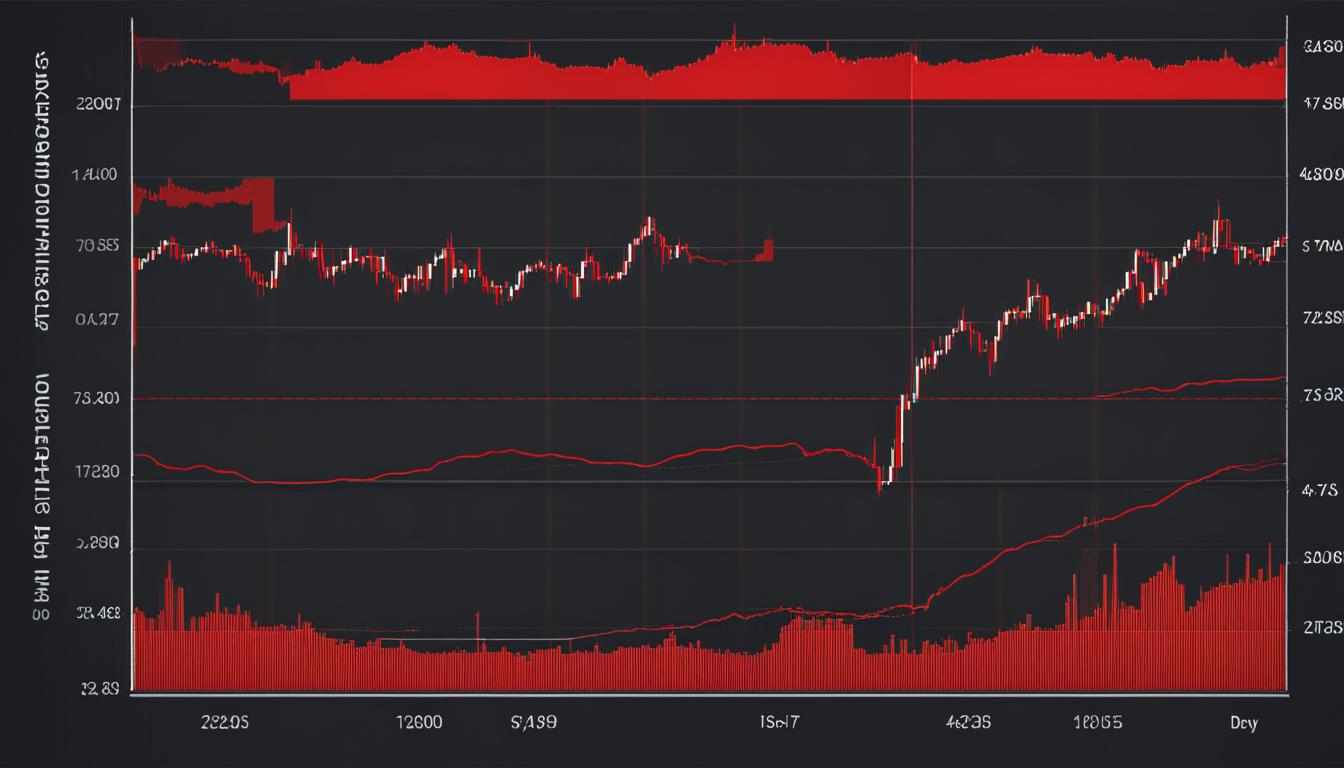Influence of Trading Halts on Options Trading: The Risks Explained

Trading halts can have a significant impact on the world of options trading. When a trading halt is initiated, open orders may be canceled and options may still be exercised, creating potential risks and challenges for traders. It is crucial to understand how these halts can influence options trading and the importance of managing the associated risks.
Key Takeaways
- Trading halts can lead to the cancellation of open orders and impact options trading.
- Understanding the risks associated with trading halts is essential for options traders.
- Regulatory and non-regulatory trading halts can occur, affecting the options market differently.
- Circuit breaker halts aim to protect market stability during periods of high volatility.
- Trading halts can influence market dynamics, including stock prices and trading volumes.
What Is a Trading Halt?
A trading halt refers to a temporary suspension of trading for a specific security or securities. This pause in trading can be triggered by various factors such as news announcements, order imbalances, technical glitches, regulatory concerns, or rapid price movements. Its purpose is to provide market participants time to assess important news or correct any imbalances in the market.
During a trading halt, open orders may be canceled, and options trading can be significantly impacted. It is crucial for investors and traders to understand the risks associated with trading halts and their potential impact on the options market.
Trading halts typically last for a defined period, allowing market participants to gather information, evaluate market conditions, and make informed decisions when trading resumes. While they play a vital role in maintaining market stability, trading halts can also introduce challenges and uncertainties for market participants.
“Trading halts aim to balance market integrity with fair access to information for all participants. They are a necessary tool to ensure market stability and protect investors during times of heightened volatility or when significant news is pending.”
How Trading Halts Work
Trading halts can be classified into two categories: regulatory trading halts and non-regulatory trading halts. Regulatory trading halts are enforced when there are concerns about a security meeting listing standards or when important news needs to be disseminated. These halts are respected by other exchanges in the US and are designed to protect investors from potential risks associated with the security in question. On the other hand, non-regulatory trading halts can occur on the New York Stock Exchange (NYSE) to correct significant imbalances between buy and sell orders.
During a non-regulatory trading halt, trading is temporarily paused to allow the market to absorb the large order imbalances and for supply and demand to regain balance. This pause provides market participants with an opportunity to reassess their positions and determine their next course of action. Once the order imbalance is resolved and there is sufficient liquidity in the market, trading resumes, allowing investors to execute their orders.
It is important to note that trading halts, whether regulatory or non-regulatory, are usually short-lived and temporary in nature. They are implemented to maintain market stability, protect investors, and ensure the smooth functioning of the market. By allowing time for market participants to evaluate important news or correct imbalances, trading halts contribute to the overall integrity and efficiency of the options market.
Regulatory Trading Halt vs. Non-Regulatory Trading Halt
It is essential to understand the distinction between regulatory and non-regulatory trading halts. While both types of halts serve the purpose of maintaining market stability, they differ in their triggers and implications. Regulatory trading halts are initiated based on specific listing standards or the need to disseminate important news, while non-regulatory trading halts are generally implemented to address order imbalances on the NYSE.
| Regulatory Trading Halt | Non-Regulatory Trading Halt |
|---|---|
| Triggered by concerns about listing standards or important news | Implemented to address significant buy/sell order imbalances |
| Respected by other US exchanges | Specific to the NYSE |
| Temporary suspension of trading | Temporary pause in trading |
Understanding how trading halts work and their different classifications can help market participants navigate periods of heightened volatility with greater confidence and strategic decision-making. By staying informed about the reasons for trading halts and the expected duration of the pause, investors can effectively manage their options trading activities and adapt to changing market conditions.

Circuit Breaker Trading Halts
Circuit breaker trading halts are an important mechanism in the financial markets that aim to safeguard market integrity and protect against excessive volatility. These halts are triggered by severe intraday declines in the S&P 500 index, acting as a pause button during times of extreme market stress.
When the S&P 500 index experiences cumulative declines of 7% and 13%, a 15-minute market-wide trading halt is initiated. This provides market participants with an opportunity to reassess the situation and make informed decisions. In the event of a 20% decline, trading is halted for the remainder of the trading day. These predetermined thresholds are designed to prevent panic selling and give market participants time to absorb new information.
The implementation of circuit breaker trading halts serves to enhance market liquidity and stabilize prices. It allows for a period of reflection and prevents sudden price moves caused by irrational market behavior. By providing a brief hiatus, market participants can regroup and evaluate their trading strategies, reducing the risk of knee-jerk reactions.
Impact on Market Volatility and Liquidity
The introduction of circuit breaker trading halts has had a significant impact on market volatility. The temporary suspension of trading during times of extreme market swings prevents further price declines and dampens volatility. This is particularly relevant when sudden price moves could lead to market dislocation and potential financial instability.
Moreover, circuit breaker trading halts contribute to the preservation of market liquidity. By allowing time for market participants to reassess their positions, it helps prevent illiquidity risks that can arise from a lack of willing buyers or sellers. This ensures that the market remains functioning and accessible, even during periods of heightened volatility.
Table: Circuit Breaker Trading Halt Thresholds
| Cumulative Decline | Trading Halt Duration |
|---|---|
| 7% | 15-minute halt |
| 13% | 15-minute halt |
| 20% | Remainder of the trading day |

The Impact of Trading Halts on Market Dynamics
Trading halts can have a significant impact on market dynamics. During a halt, investors are forced to hold their positions without the ability to rebalance based on market news. This can lead to illiquidity risks and reduce investors’ willingness to hold the stock upon market closure. As a result, stock prices may experience sharp drops to attract new investors and restore market equilibrium. Additionally, trading volume may increase as investors rush to make trades before the next expected trading halt.
Illiquidity risks arise during trading halts because investors are unable to exit or adjust their positions. Without the ability to trade, the market becomes less liquid, as there are fewer buyers and sellers. This can make it challenging to find a counterparty to execute a trade at a desired price, leading to wider bid-ask spreads and increased price volatility.
The inability to rebalance positions during a trading halt can also impact stock prices. When investors cannot adjust their holdings based on new information or market conditions, there may be a disconnect between the value of the stock and its trading price. This can result in sharp drops in stock prices when trading resumes, as investors adjust their positions to reflect updated market conditions. Likewise, some investors may become more cautious about holding a particular stock after a trading halt, further contributing to downward pressure on stock prices.
Furthermore, trading volume tends to spike before and after trading halts. Before a halt, investors may rush to make trades to adjust their positions or take advantage of potential price movements. After a halt, there can be a surge in trading activity as investors react to new information or attempt to exploit perceived mispricing in the market. The increased trading volume can further contribute to price volatility and market dynamics during and after trading halts.
- Illiquidity risks
- Price dynamics
- Trading volume
- Stock prices
The impact of trading halts on market dynamics underscores the importance of understanding and managing the risks associated with these temporary suspensions of trading. Market participants must be prepared for potential illiquidity, heightened price volatility, and increased trading volume during and after trading halts. Developing effective risk management strategies and staying informed about market news and events can help investors navigate these challenging periods and make informed trading decisions.
| Impact of Trading Halts on Market Dynamics | Key Factors |
|---|---|
| Illiquidity Risks | Reduced trading activity, wider bid-ask spreads, increased price volatility |
| Price Dynamics | Disconnect between stock value and trading price, sharp drops in stock prices upon trading resumption |
| Trading Volume | Increased trading activity before and after trading halts |
| Stock Prices | Potential decline in stock prices to attract new investors |
Conclusion
Trading halts are an integral part of market structure and are crucial for maintaining stability and protecting investors. However, they also present risks and unintended consequences that market participants should be aware of. Effective risk management strategies are essential for navigating periods of heightened volatility and ensuring the integrity of the price discovery process.
To mitigate the impact of trading halts on options trading, market participants should explore innovative trading technologies. These technologies can provide more options for executing complex strategies during trading halts and help market participants adapt to rapidly changing market conditions.
Furthermore, continuous advancements in market structure are necessary to enhance the efficiency and resilience of the market during trading halts. Market participants should work towards developing robust risk management systems and explore measures to improve the price discovery process.
FAQ
What is a trading halt?
A trading halt is a temporary suspension of trading for a specific security or securities. It can be triggered by various factors such as news announcements, order imbalances, technical glitches, regulatory concerns, or rapid price movements.
How do trading halts work?
Regulatory trading halts are typically applied when there is doubt about a security meeting listing standards or when important news needs to be disseminated. Non-regulatory trading halts can occur on the New York Stock Exchange (NYSE) to correct large imbalances between buy and sell orders. These halts are usually short-lived and trading resumes once order balance is restored.
What are circuit breaker trading halts?
Circuit breaker trading halts are triggered by severe intraday declines in the S&P 500 index. Cumulative declines of 7% and 13% trigger a 15-minute market-wide trading halt, while a 20% decline halts trading for the remainder of the trading day. Circuit breakers can also apply to individual stocks, with specific price thresholds triggering trading halts.
How do trading halts impact market dynamics?
During a trading halt, investors are forced to hold their positions without the ability to rebalance based on market news. This can lead to illiquidity risks and reduce investors’ willingness to hold the stock upon market closure. As a result, stock prices may experience sharp drops to attract new investors and restore market equilibrium. Additionally, trading volume may increase as investors rush to make trades before the next expected trading halt.
What is the importance of trading halts?
Trading halts play a crucial role in maintaining market stability and protecting investors. However, they also come with risks and unintended consequences. It is important for market participants to understand the impact of trading halts on options trading and to develop effective risk management strategies to navigate periods of heightened volatility. Furthermore, advancements in trading technologies and market structures are needed to provide more options for executing complex strategies during trading halts and to ensure the integrity of the price discovery process.






